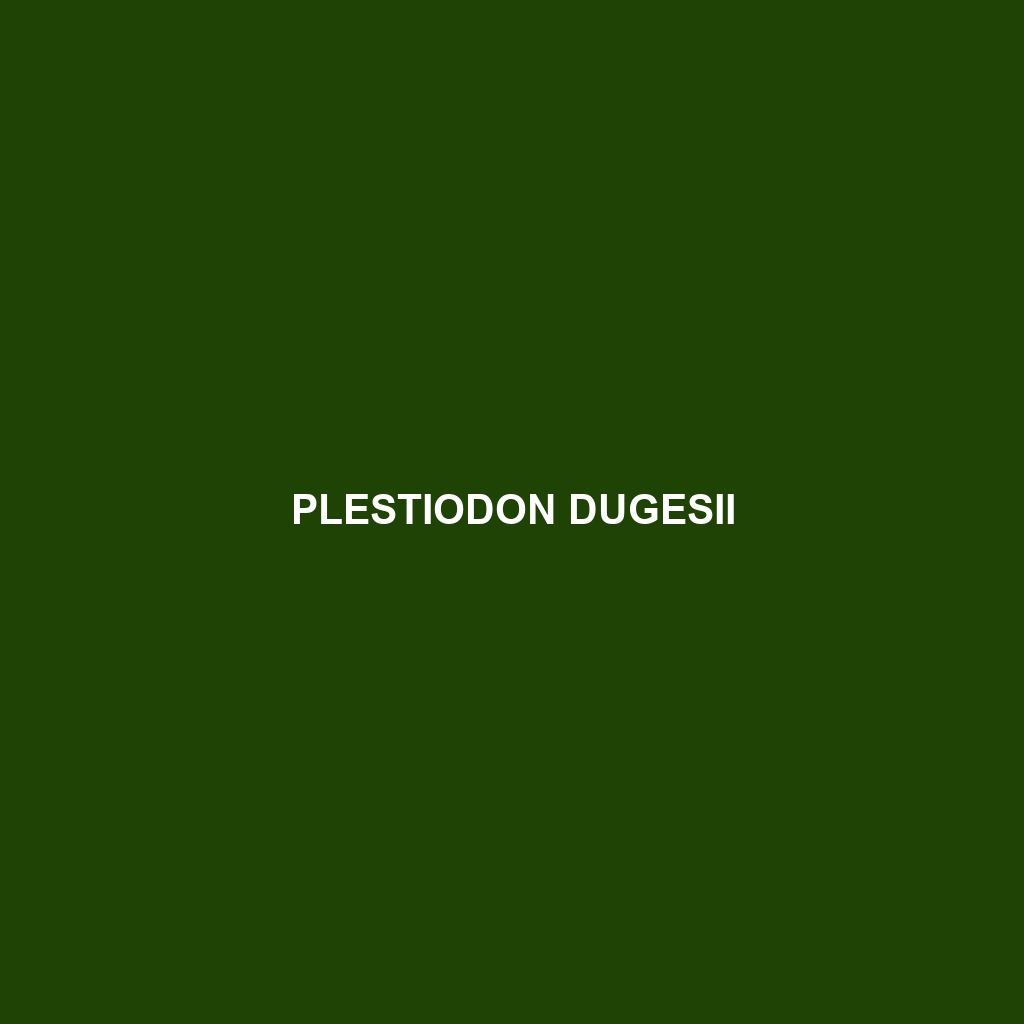Common Name
Plestiodon dugesii
Scientific Name
Plestiodon dugesii
Habitat
Plestiodon dugesii, commonly known as Duges’ skink, is primarily found in a variety of habitats across the northern regions of Mexico and parts of the southwestern United States. These lizards are adaptable and can thrive in environments such as temperate forests, savannas, and even scrublands. The species prefers areas with ample cover, including leaf litter and rocky crevices, which provide refuge from predators. They are typically observed in warm, sunny climates where they can bask during the day, often in regions that experience seasonal variations in temperature.
Physical Characteristics
Plestiodon dugesii exhibits a range of physical attributes that make it a unique member of the skink family. Adults typically reach lengths of 15 to 25 centimeters (6 to 10 inches). The body is elongated and somewhat flattened, which allows for agile movement through debris and underbrush. Its coloration is particularly striking; they generally display a series of dorsal stripes that may vary in color from brown to gray, complemented by lighter ventral surfaces. One distinctive feature is the presence of small, granular scales, which differentiate this species from others in its genus. Their vibrant coloration can serve as a warning to potential predators, highlighting their adaptability to various environmental conditions.
Behavior
Plestiodon dugesii is primarily diurnal, which means it is most active during daylight hours. These lizards are known for their agile movements and are often observed basking on rocks or tree bark to regulate their body temperature. The species engages in complex social interactions, particularly during the breeding season when males exhibit territorial behaviors. Although they are not migratory, these skinks can be seen moving between various habitats in search of food or suitable mates. Their mating rituals often involve intricate displays of strength and color, especially among competing males.
Diet
The diet of Plestiodon dugesii primarily consists of insects and other small invertebrates, classifying them as insectivores. They feed on a variety of prey, including beetles, crickets, and ants. Their feeding behavior is characterized by quick strikes to capture prey, aided by their keen eyesight. Rather than relying heavily on ambush tactics, these skinks actively hunt, showcasing their agility and speed. In certain environments, they may also consume plant matter, becoming opportunistic feeders that adapt their diet based on food availability.
Reproduction
The reproductive cycle of Plestiodon dugesii typically occurs in late spring to early summer. Mating rituals involve males engaging in displays of strength and territory with other males. After successful mating, females lay clutches of 3 to 6 eggs in sandy or loose soil, providing ideal conditions for incubation. The gestation period lasts about 60 days, after which hatchlings emerge fully developed and ready to fend for themselves. Parental care is minimal post-hatching, as the young are left to integrate into the surrounding habitat.
Conservation Status
Currently, Plestiodon dugesii is classified as a species of least concern by the IUCN. However, these lizards face potential threats from habitat destruction and climate change, which could lead to population declines in the future. Conservation efforts are focused on preserving their natural habitats and monitoring population dynamics to ensure they remain stable. Maintaining healthy ecosystems is crucial for the survival of this species, as it relies on specific environmental conditions that are increasingly being altered by human activity.
Interesting Facts
One fascinating aspect of Plestiodon dugesii is its ability to regenerate its tail after losing it to escape predators, a trait common in many lizard species. This regeneration process can take several weeks and allows them to evade threats while still maintaining their ecological roles. Additionally, the coloration of these skinks can vary significantly between environments, with individuals in more arid regions developing lighter hues to reflect more sunlight and conserve heat.
Role in Ecosystem
Plestiodon dugesii plays a vital role in its ecosystem as both a predator and prey species. By feeding on various insects, they help control pest populations, contributing to the balance of local ecosystems. Additionally, as prey for birds and larger mammals, they are an integral part of the food web. Their presence can indicate the health of their habitat, as they require specific environmental conditions to thrive. As such, this species acts as a bioindicator, helping to signal changes in ecosystem health and stability.
